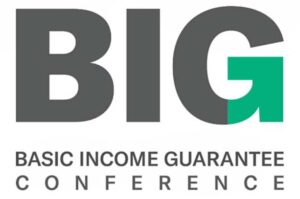
FLIGHT SHARE
Create a fair framework to reduce the climate change impacts of Air Travel
Flight Share sets a cap (or limit) on air travel in a jurisdiction. It may be implemented in several ways, including:
- A limit on airplanes in a geographic region
- A limit on airport size or capacity
- Number of flights into or out of an airport
- Number of planes at an airport
- A limit on flights that an individual can take over a given time
Depending on the approach chosen, Flight Share then distributes equal tradable rights to consumers to consume the capacity under that cap. Residents receive income from selling unused portions of their Flight Share, which resides on a debit card that can be used to book flights.
THE GOAL
The goal of Flight Share is to create a fair framework to reduce the climate change impacts of air travel by limiting its availability, raising the costs (but also returning income to those under the cap, providing an economic incentive for conservation). Flight Share can help jurisdictions reduce jet fuel use, promote efficient transportation alternatives, address climate change in the aviation sector and return money back to residents.
HOW IT WORKS
WHAT IS BEING REGULATED: FLIGHTS
A Flight Share system sets a cap on one or more of the following:
- Number of airplanes in a geographic region
- Airport size or capacity
- Number of flights into or out of an airport
- Number of planes at an airport
- Number of flights that an individual can take over a given time
HOW FLIGHTS ARE REGULATED AND CAPPED
Setting a mandatory, community-wide aviation budget will ensure that its use will decrease in your jurisdiction over time. The budget can be set starting at current usage, and reducing by some percentage each year in order to phase out its use by the year 2030, 2040, or 2050. This creates an impending scarcity of air travel capacity, which raises the price of flights. A higher cost will reduce aggregate fuel demand, but also gives value to the Flight Shares, which are allocated to the public, and purchased by air travel companies, recycling the revenue.
In order for a jurisdiction or institution to set a limit on air travel, they must be motivated to reduce air travel and be prepared for potential increases in its price. The initial steps are to measure the amount of air travel in a region, set a reduction schedule, and assign a point of regulation where air travel is conducted.
Before initiating a Flight Share program, a study of the air travel industry should be conducted to determine the best point of regulation. For example, there may be an industry association that could represent all airlines together in the regulatory process. The travel agent industry may also play a role in explaining the program to customers.
HOW TO DIVIDE AND DISTRIBUTE SHARES
Once a limit on air travel for the jurisdiction is set, allowances (shares) representing the budget are distributed to the population. For example, each person receives one share, and each share represent a certain number of flights. The simplest approach is to divide total consumption by all households in the jurisdiction by the number of households. There may need to be some caveats to this, but the more deviations from the equal-across-the-board approach, the more difficult it will be since everyone will consider themselves an exception to the rule.
The shares may be provided to the public through an electronic transfer into an account that is managed online or onto a debit card.
The total dollar value of all the Flight Shares combined is assumed to be the difference in air travel prices due to the imposed budget constraint on supply. Dividing the total increase created when the cap was imposed by the number of shares provides the price of a single share. Since fuel prices fluctuate for other reasons as well, the share price may be based on an average travel price premium over a given length of time.
HOW TO RECEIVE COMPENSATION
Once consumers receive the share, they use it to book travel with the upstream air travel companies. This exchange returns the increase in travel prices due to scarcity back to consumers.
Consumers sell the share to the air travel company electronically, or by swiping a debit card at point of sale locations (this could be combined with frequent flyer mileage programs). Consumers pay higher travel prices, but receive some compensation by selling the Shares to the travel companies. Companies must provide an accounting of Shares to the Government. The next year it starts over, with fewer flights per share according to the jurisdiction’s Flight Budget.
The sale of the share represents a rebate to the consumer. After the share is sold, then consumers will pay full price for the travel purchased until the next allocation of shares. Whether consumers come out ahead at the end of the year, or end up paying more depends on their activities.
The higher travel price encourages conservation (flying less, taking trains or other forms of long distance transportation, etc.).
WHAT MAKES IT UNIQUE
Like frequent flier miles in reverse, Flight Share raises the cost of travel for frequent travelers. It can exist alongside low-carbon fuel standards, biofuels, and Sustainable Aviation Fuel. Flight Share is for jurisdictions that seek to set a more stringent limit on air travel and encourage other, less carbon-intensive transportation options.
Voluntary rationing has not been popular due to perceived political obstacles. The status quo approach seems to be: the invisible market will somehow fix itself, let’s deny that we have a major problem with aviation emissions, and climate change will just go away on its own. Individual actions will not get us there. The de facto system will allow very wealthy people to keep traveling no matter how high fuel taxes or surcharges get, and fuel taxes will not stop consumption from pushing us past ecological tipping points.
Flight Share returns value back to consumers on an equal basis. This addresses the regressive impacts of gas taxes, provides an incentive for conservation, and may allow for more political support.
Flight Share addresses multiple issues, including:
- Climate Change – reduces emissions from the aviation sector, and related benefits to air quality and public health
- Promoting Travel Alternatives – encourages travel options that use less jet fuel, including “staycations”
- Provides Incentives for Conservation – people who fly less will end up with extra Shares, which they can then sell to others for cash
- Addresses the Regressive Impacts of fuel price increases – fuel taxes are more burdensome to low-income people who spend a larger proportion of their income on petroleum. Providing an equal Flight Share to everyone will help the low-income families more, while still incentivizing conservation across all income levels.
Flight Share supporters believe that a fuel budget can be designed to provide the right price signals to reduce fuel use, while recycling revenue to people. Governments can create a mandatory cap on fuel imports, and return the value of permits under the cap back to households.
Although the Share counteracts some of the price increases in fossil fuels, it should be designed to not totally negate the price signal. The goal is to make air travel more expensive in order to change consumer behavior. However, some consumer compensation will reduce the regressive impacts on low-income people. Although fuel price increases will have positive environmental effects, Flight Share helps make the impacts on people more fair. You also want a slowly increasing price signal, and to avoid price spikes, insecurity, causing a recession, and backlash. A per capita rebate, such as Flight Share, would alleviate some, but not all, of the impact. High carbon emitters would still pay more. Also the rebate helps preserve short-term political support for the long-term emissions cap.
As part of the planning to introduce a Flight Share program, advocates should survey opportunities for low- or non-petroleum-based travel options that incorporate active mobility, public transit, electric cars, stayacations, and more.
RESOURCES TO GET STARTED
Cities or Counties would need to pass a law setting a mandatory air travel budget, and subsequently place a Flight Share program on the ballot for referendum. The law would describe a timetable for the jurisdiction to develop a mandatory air travel budget. The law would also create short term funding needed to conduct feasibility studies and set up the infrastructure to issue the Flight Shares for the first year. In subsequent years, program administration could be funded through transaction fees on the sale of Shares. The jurisdiction could also delegate program administration to a sub-contractor, while preserving full government oversight. The jurisdiction would also set up stakeholder advisory groups to provide feedback and allow for public comment.
Studies and Links
FEASTA podcast on the future of tourism and business travel
The Stay Grounded Network
New economics foundation and Possible Study on A Frequent Flyer Levy (2021)
Time Magazine: There Needs to Be a Climate Tax for Frequent Fliers, March 2023
FEASTA comments on EU proposal on aviation fuels (2006)
https://www.feasta.org/2006/12/20/press-release-feastas-response-to-eu-aviation-proposals/
FEASTA Background Briefing: Controlling the environmental impact of the transport sector (2006)
https://www.feasta.org/documents/energy/Aviation_background_briefing.pdf
Article: There Is No Sustainable Way to Fly
https://www.vice.com/en/article/9393gp/there-is-no-sustainable-way-to-fly
Article: Flying Less is Critical to a Safe Climate Future
https://www.publicadministrationreview.com/2019/07/16/gnd24/
Flight Free/ We Stay on the Ground: “We Need to Talk About Aviation”
https://drive.google.com/file/d/1Tj1Ohzx7g_6oGLFKzhNJLx57Yt009zdR/view
UN International Civil Aviation Organization – Aviation Emissions Projections
https://www.icao.int/environmental-protection/Pages/ClimateChange_Trends.aspx
Air travel CO2 calculator (although not an endorsement of “offsets”)



